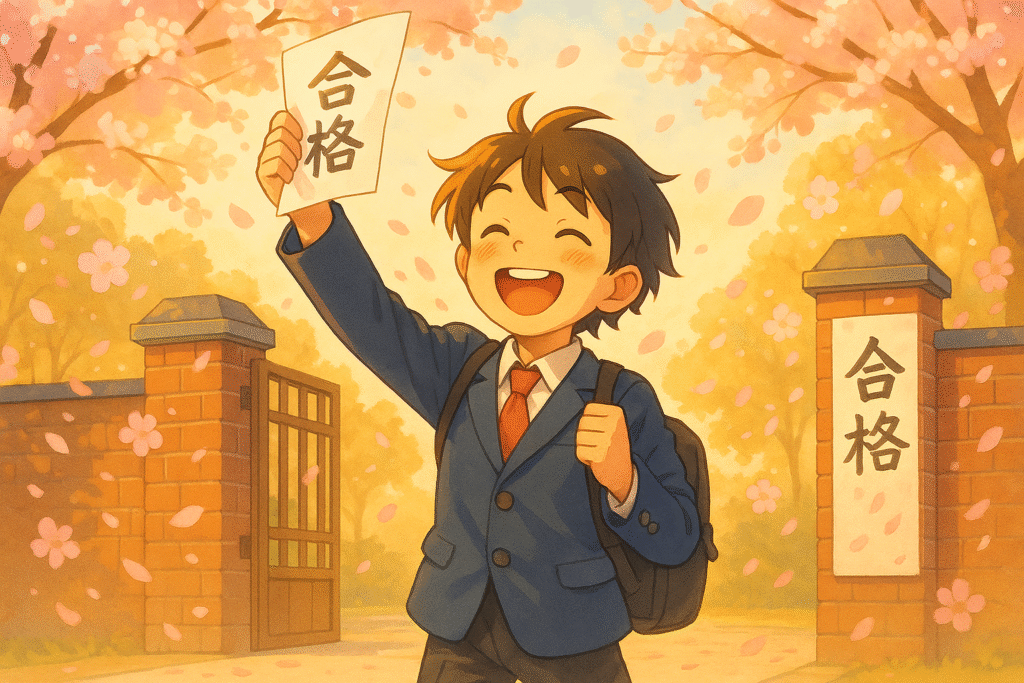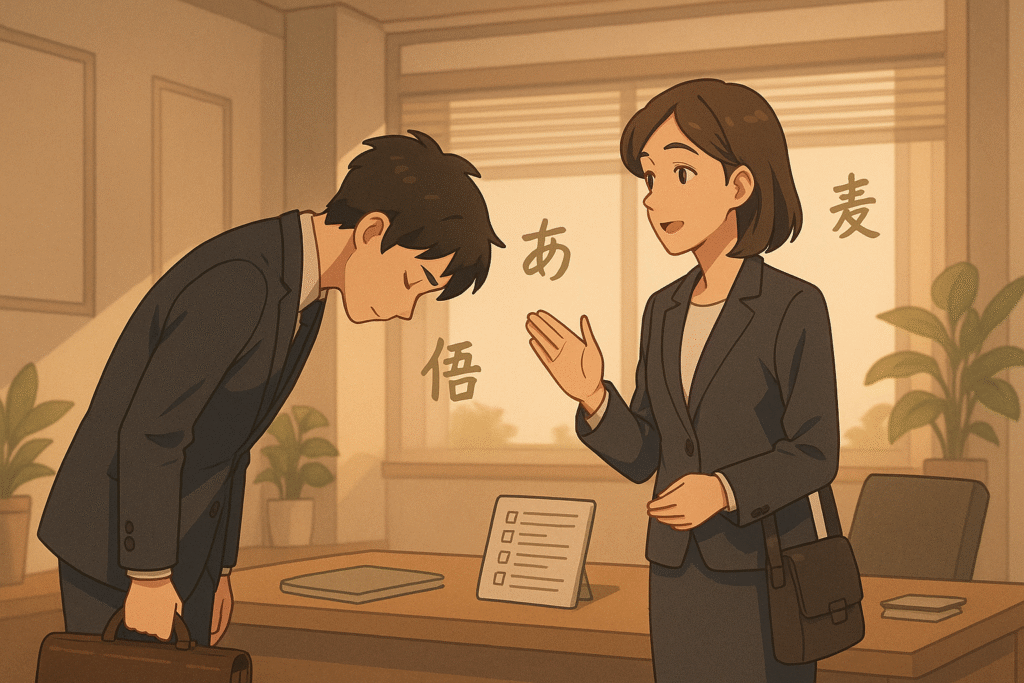Have you ever been thanked by a Japanese person and found yourself unsure how to respond? While “thank you” might be one of the first phrases you learn in any language, knowing how to say “you’re welcome” in Japanese requires a more nuanced understanding of the culture and social context. From casual conversations with friends to formal business meetings, Japanese offers a rich variety of expressions to acknowledge gratitude with the appropriate level of politeness.
Why Mastering “You’re Welcome” Phrases Matters in Japanese
In Japanese culture, where politeness and social harmony are highly valued, responding appropriately to thanks isn’t just good manners—it’s essential for building relationships. The way you say “you’re welcome” can reveal a lot about your understanding of Japanese social dynamics and your relationship with the person thanking you.
As we explored in our post about the meaning of “Otsukare” in Japanese culture, expressions of appreciation in Japan often go beyond simple translation and carry cultural weight. The same applies to responses to gratitude.
The Most Common Way to Say “You’re Welcome” in Japanese
When most beginners look up how to say “you’re welcome” in Japanese, they typically find:
どういたしまして (Dou itashimashite)
This is the textbook translation for “you’re welcome” and is considered polite and proper. However, there’s something important to know: native Japanese speakers rarely use this expression in everyday conversation. While it’s not incorrect, it often sounds a bit stiff or formal to native ears.
Example:
- Friend: “ありがとう!” (Arigatou! – Thank you!)
- You: “どういたしまして。” (Dou itashimashite. – You’re welcome.)
Casual Ways to Say “You’re Welcome” in Japanese
In more relaxed situations with friends, family, or people you know well, these casual expressions are much more natural:
いえいえ (Ie ie)
Literally meaning “no, no,” this humble expression downplays your help or kindness. It’s similar to saying “it’s nothing” or “don’t mention it” in English.
Example:
- Friend: “手伝ってくれてありがとう!” (Tetsudatte kurete arigatou! – Thanks for helping me!)
- You: “いえいえ、大したことじゃないよ。” (Ie ie, taishita koto janai yo. – No no, it’s not a big deal.)
とんでもない (Tondemonai)
This expression conveys “not at all” or “it’s nothing,” emphasizing that what you did wasn’t a burden.
Example:
- Colleague: “助かったよ、ありがとう。” (Tasukatta yo, arigatou. – That was helpful, thanks.)
- You: “とんでもない、簡単なことだから。” (Tondemonai, kantan na koto dakara. – Not at all, it was simple.)
Want to explore Japan’s culture?
Discover Japan’s rich culture, traditions, and hidden gems with our expertly crafted guides. Get insider tips on travel, food, and history. All for free!
気にしないで (Ki ni shinaide)
Meaning “don’t worry about it,” this phrase reassures someone that no repayment or further thanks are necessary.
Example:
- Friend: “迷惑をかけてごめんなさい。” (Meiwaku wo kakete gomen nasai. – Sorry for troubling you.)
- You: “気にしないで、全然大丈夫だよ。” (Ki ni shinaide, zenzen daijoubu da yo. – Don’t worry about it, it’s completely fine.)
よかった (Yokatta)
Simply meaning “I’m glad,” this expression shows you’re happy you could help.
Example:
- Student: “説明してくれてありがとう。” (Setsumei shite kurete arigatou. – Thanks for explaining.)
- You: “役に立ててよかった。” (Yaku ni tatete yokatta. – I’m glad I could help.)
As we discovered in our guide on “Soshite: How to Use This Essential Japanese Conjunction”, connecting your phrases naturally can make your Japanese sound more fluid. These casual responses can be combined to create more natural-sounding responses.
Formal Ways to Say “You’re Welcome” in Japanese
In business settings or when speaking with superiors, customers, or people you don’t know well, these more formal expressions are appropriate:
恐縮でございます (Kyoushuku de gozaimasu)
This highly polite expression conveys “I am humbled” or “I am obliged,” showing deference to the other person.
Example:
- Client: “いつもお世話になっております。” (Itsumo osewa ni natte orimasu. – Thank you for always taking care of us.)
- You: “恐縮でございます。こちらこそ。” (Kyoushuku de gozaimasu. Kochira koso. – I am humbled. The pleasure is mine.)
お役に立ててよかったです (O-yaku ni tatete yokatta desu)
A polite version of “I’m glad I could be of service,” showing satisfaction in being helpful.
Example:
- Customer: “ご丁寧にありがとうございます。” (Go-teinei ni arigatou gozaimasu. – Thank you for your kindness.)
- You: “お役に立ててよかったです。” (O-yaku ni tatete yokatta desu. – I’m glad I could be of service.)
こちらこそ (Kochira koso)
Meaning “likewise” or “me too,” this expression returns the sentiment of gratitude.
Example:
- Business partner: “お時間をいただきありがとうございました。” (O-jikan wo itadaki arigatou gozaimashita. – Thank you for your time.)
- You: “こちらこそ、貴重なお話をありがとうございました。” (Kochira koso, kichou na o-hanashi wo arigatou gozaimashita. – Likewise, thank you for the valuable conversation.)
Much like our exploration of “Asobi Meaning: From Rituals to Modern Play” revealed the cultural depth behind Japanese concepts, these formal expressions of “you’re welcome” reflect Japan’s emphasis on humility and mutual respect.
Regional and Contextual Variations
Just as we discovered in “Things to Do in Japan in October”, Japanese culture varies by region and context. The same applies to expressions of gratitude and responses:
- In Kansai (particularly Osaka), you might hear “ええよ” (ee yo) as a casual “you’re welcome”
- Among younger people, “いいよ” (ii yo) or “全然” (zenzen) are increasingly common casual responses
- In very formal settings like high-end customer service, “恐れ入ります” (osoreirimasu) might be used
Tips for Using “You’re Welcome” Expressions Naturally
- Match the level of formality to the situation and your relationship with the person
- Pay attention to tone – even casual phrases should be spoken with sincerity
- Consider body language – a slight bow often accompanies formal expressions
- Practice with native speakers to develop a natural feel for when each expression is appropriate
Want to master these phrases and more? Check out our comprehensive Japanese learning guides where you can access free resources to accelerate your Japanese journey.
Q&A: Common Questions About Saying “You’re Welcome” in Japanese
What is the most common way to say “you’re welcome” in Japanese?
The most common way Japanese people say “you’re welcome” in everyday conversation is “いえいえ” (ie ie), which literally means “no, no” but functions similarly to “don’t mention it.”
How do you say “you’re welcome” formally in Japanese?
In formal situations, “恐縮でございます” (kyoushuku de gozaimasu) or “お役に立ててよかったです” (o-yaku ni tatete yokatta desu) are appropriate formal ways to say “you’re welcome” in Japanese.
Is “どういたしまして” (dou itashimashite) commonly used in Japan?
While “どういたしまして” is the textbook translation for “you’re welcome,” native Japanese speakers rarely use this expression in everyday conversation, often preferring more casual or humble alternatives.
Can I just say “はい” (hai) when someone thanks me?
While “はい” (yes) can sometimes be an appropriate response to thanks in certain contexts, it may come across as curt. Adding one of the expressions mentioned above makes your response more natural and polite.
By mastering these various ways to say “you’re welcome” in Japanese, you’ll demonstrate cultural awareness and improve your communication skills significantly. Remember that the best expression depends on the context and your relationship with the person thanking you. As with many aspects of Japanese language, the right level of politeness is key to successful communication.
Love Japan? Stay in the Loop!
Get the best of Japan straight to your inbox: language, culture & travel insights!




